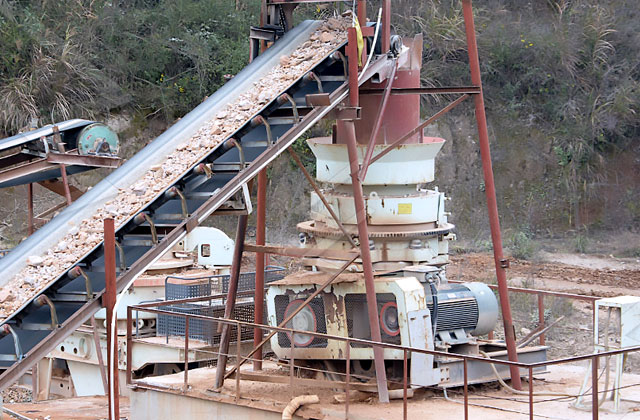Limestone crushing lines are commonly used in various industries, such as construction, mining, and cement production, to process limestone into smaller sizes for various purposes. While the process can be efficient and productive, it is important to prioritize safety to prevent accidents and ensure the well-being of workers. Here are some key safety precautions to consider when operating a limestone crushing line:

- Training and Education:
- Ensure all personnel involved in operating the crushing line receive proper training on equipment operation, safety protocols, and emergency procedures.
- Regularly provide refresher training sessions to reinforce safety practices and update workers on any new developments or procedures.
- Personal Protective Equipment (PPE):
- Mandate the use of appropriate PPE for all workers, including safety glasses, hard hats, steel-toe boots, gloves, and hearing protection.
- Ensure workers understand the importance of wearing PPE and enforce compliance at all times.
- Equipment Inspection and Maintenance:
- Regularly inspect and maintain all machinery and equipment in the crushing line according to manufacturer guidelines.
- Keep records of inspections and maintenance activities, including any repairs or replacements performed.
- Promptly address any equipment malfunctions or issues to prevent accidents.
- Lockout/Tagout Procedures:
- Implement lockout/tagout procedures to ensure that all energy sources are properly isolated before performing maintenance or repair work on equipment.
- Train workers on lockout/tagout procedures and enforce their strict adherence.
- Traffic Management:
- Establish clear traffic management plans to separate pedestrian and vehicular traffic within the crushing line area.
- Clearly mark walkways and vehicle routes, and use barriers or signage to guide workers and vehicles safely through the site.
- Enforce speed limits and safe driving practices to minimize the risk of collisions or accidents.
- Dust Control:
- Implement effective dust control measures, such as installing dust suppression systems or using water sprays, to minimize the generation and spread of airborne dust.
- Provide workers with appropriate respiratory protection when necessary.
- Emergency Preparedness:
- Develop and communicate emergency response plans, including evacuation procedures, fire suppression measures, and first aid protocols.
- Install fire extinguishers and ensure they are regularly inspected and maintained.
- Conduct periodic drills to test the effectiveness of emergency procedures and identify areas for improvement.
- Housekeeping:
- Keep the crushing line area clean and free from clutter, debris, and tripping hazards.
- Regularly remove accumulated dust or spillages that may pose safety risks.
- Store tools, equipment, and materials in designated areas to prevent accidents caused by tripping or falling objects.
- Communication and Signage:
- Clearly display safety signs, warning labels, and operating instructions on equipment and machinery.
- Use visual communication tools such as safety posters and banners to reinforce safety messages.
- Encourage open communication among workers to report any safety concerns or near-miss incidents.
- Supervision and Accountability:
- Assign competent supervisors to oversee the crushing line operations and ensure compliance with safety protocols.
- Establish a culture of accountability by holding individuals responsible for their actions and enforcing disciplinary measures for safety violations.
Remember that these precautions serve as general guidelines, and it is essential to adapt them to your specific work environment and comply with local safety regulations. Regularly review and update your safety procedures to incorporate new knowledge and best practices to ensure the ongoing safety of everyone involved in the limestone crushing line operations.


